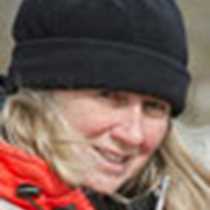South Georgia
South Georgia’s multiple personalities can be confusing to the casual visitor. But possibly that is why she is so beloved by all who venture here. Bathed by the cold southern ocean she is truly Antarctic in name. However flora and fauna scream sub-antarctic island. Hundreds of miles from anywhere one would expect wildness to prevail, but not so long ago man swooped in leaving a tarnished legacy in his wake. Even in her seasons she seems to be perplexing. Just yesterday we witnessed tiny chicks nestled beneath brooding adults, both king penguin and wandering albatross. To those of us from northern climes baby birds mean springtime. But not here. Today the colors of fall paint the hillsides and a nip in the air warns that winter is coming.
Fortuna Bay was our sheltered anchorage overnight and it will be again in the darkness that has brought closure to our day. Its turquoise waters, laden with glacial flour were a sharp contrast to the dark navy of the sea waiting just outside the protective mountain ridges. Our mode of egress under the pastel pinks and blues of early morning light was either on foot or by sea. Red-coated figures rapidly became miniscule specks as the intrepid walked in the footsteps of Ernest Shackleton and his two companions. A sense of urgency must have pushed them on their way so many years ago and it seemed to drive our hikers too for barely had the ship repositioned to Stromness Bay than the entire complement reunited.
A peaceful somnolence seemed to permeate the air in Stromness Bay. Fur seal pups and females slumbered on grassy meadows and rocky outwash channels. The frantic activity of early spring mating season and summer deliveries is over. Weaning time is near. Reindeer grazed between them sporting new and glistening antlers ready for the coming rut. Grasses took on a flaxen hue, the color that signals autumn and mosses turned to red. Giant rusting propellers littered the shore near the ruins of a whaling station. It too is silent now. Not that long ago, death ruled the shoreline. Thousands of whales met their demise to provide products demanded by our forefathers. Millions of seals too were harvested for hats and other ostentatious ornamentations. How long was the silence then? Now the seals are back. Hopefully the whales will follow and the rusting ruins will simply serve as a reminder.
Grytviken too was approached from sea and shore, hikers having trekked from Maiviken. Past and present mingle here. Brightly colored helicopters sat beside decaying whale catching vessels. Scientists housed at King Edward Point look to the future when the island is cleared of exotic rats, while a tiny church and museum look to the past to remind us of what it was like when man came to take and not to preserve.
Within a tiny plot delineated by a white rail fence, the final resting place of a great man can be found. We gathered in the waning light of day and raised a glass in a toast to “The Boss,” Ernest Henry Shackleton.




